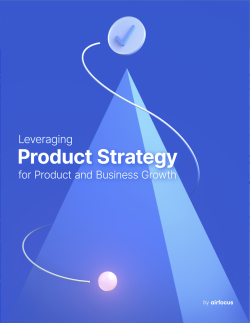Product Planning
What is product planning and its importance?
Product planning definition
Product planning is the set of methods and processes a business uses to plan the development of a new product. It centers around the internal processes that are required for a product to be developed. It does not include marketing and deployment, as these are external aspects of product development. These external processes fall under "go-to-market" planning.
For product-oriented companies (as opposed to service-oriented companies), product planning is one of the most essential practices that businesses will engage in. The efficiency and effectiveness of your product planning are pivotal to how quickly you can develop a product, the level of quality that the product possesses, and to what degree it resonates with audiences.
What is a product planning example?
One of the most dominant and successful product planning strategies of the last fifty years. It was developed as a way to organize software development, a category of product that is uniquely iterative, flexible, and ongoing.
Agile product planning focuses on organizing a product development timeline as a project. A vision is created, broken down into goals and milestones, divided into tasks, and then assigned. This creates a hierarchy of priorities (the vision being at the top and individual tasks being at the bottom) and allows for a high degree of flexibility — hence the name "agile".
Modern agile product planning strategies are made even more flexible due to check-ins. Check-ins happen periodically, at least as often as each goal/milestone is reached and sometimes even more often. This gives the team space to correct mistakes, implement new ideas and scrap old ones, and adapt the vision and practical development to one another.
What are the steps in product planning?
1. Ideation
The first step is ideation. This is where the idea for the product will be developed. There is usually a seed of an idea for what the product should look like and accomplish.
However, these initial ideas and concepts are usually pretty rough. They fail to consider factors like how will this product look in the home, feel in the hand, work for users with accessibility needs, cost the customer, etc. During the ideation phase, you'll want to address all of these concerns and more, even if you don't necessarily come to a final solution on any of them.
2. Market research
Once you have a more concrete idea of what your product will look like and the factors that need to be considered during its development, you're ready to move to step two: market research.
Market research is the first step in the product planning process where you'll put your ideas to the test. How correct were your assumptions in the ideation phase? How can they be improved upon, and which should be scrapped altogether?
3. Testing
In the third stage of product planning, you'll want to come up with a methodology for testing your product. You don't need to be worried about testing your product right now, as it hasn't begun development yet. Rather, you're making tests in anticipation of when that product will exist.
For instance, if you are developing a hand tool, you might devise a test that involves your non-dominant hand. This can help you spot ergonomic issues in your design. If you're building a software product, then having an elderly person test it can be a useful way to see how intuitive your software is. This step of your product planning is where you'll imagine how these tests will work and what information they'll provide you with.
4. Product maturity
The fourth stage deals with your product after its launch. Again, you are not planning how your product will launch — that's reserved for go-to-market planning.
Instead, product maturity focuses on the continued period of development after a product launch. Inevitably, there will be issues and improvements to your product that only become apparent once it's in the hands of hundreds or thousands of individuals.
5. Product life cycle
That brings us to the fifth and final step of product planning, and that's planning for the length of your product's life cycle.
Products do not exist in a vacuum, and they don't stop existing after they launch. Even as new features are added and problems resolved, you'll still have a product out in the world that people are purchasing and using. You also have a marketplace that will start coming up with ways to compete with your product. How will you stay competitive? What customer support systems will you have in place? What will your maintenance look like?
What is product planning and product development?
Product planning is the process of outlining your product development. You aren't conducting product development at this stage, but rather preparing for the beginning, middle, and ending stages of your product development cycle.
Product development, on the other hand, is where you'll be engaging in the development of your product. This might involve coding, designing, manufacturing, and/or product testing.

General FAQ

Glossary categories
Create effective product strategy

Experience the new way of doing product management








